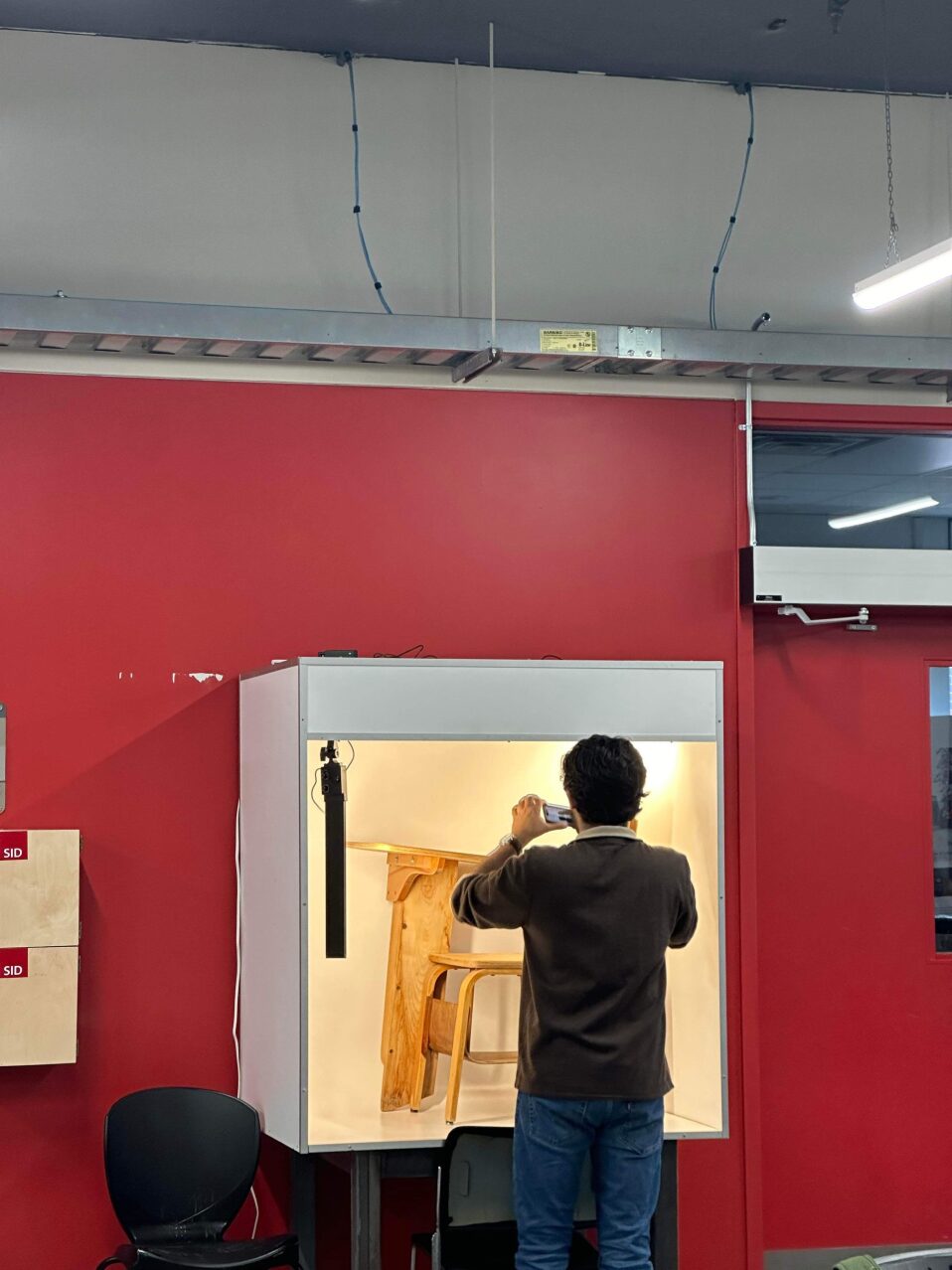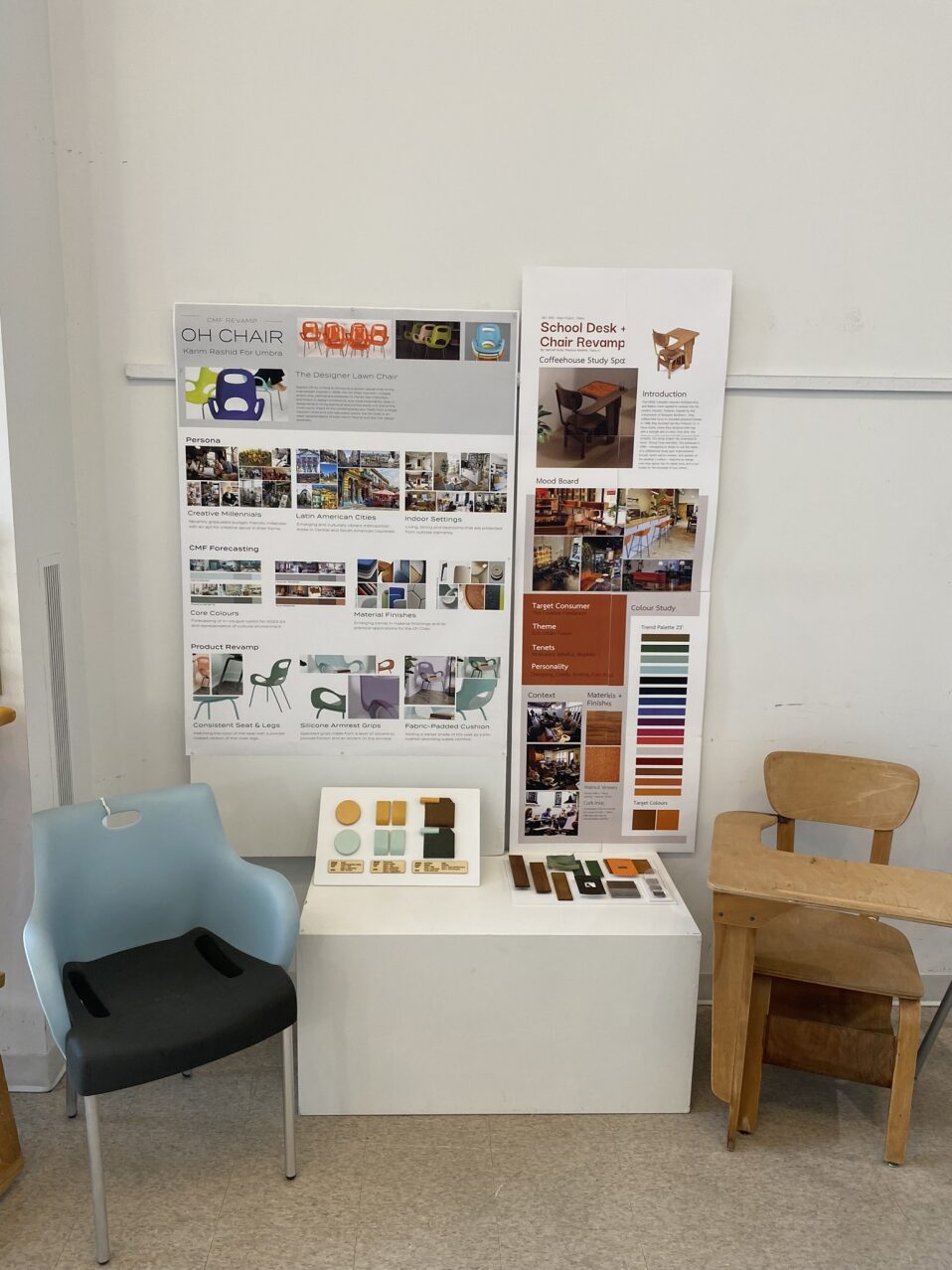Have you ever taken a close look at the objects around you? For example, have you ever wondered where the chair you are sitting on originated from, who designed it, or why it looks the way it does?
Chairs are great storytellers! Chairs hold tons of data because they are so contextually diverse. They are uniquely rich design artefacts which can be examined, analyzed, studied through many lenses. As an instructor in Carleton University’s School of Industrial Design, I’ve taken advantage of the xDX collection of chairs in pursuing my pedagogical aims. Most recently, I used them in a new course that introduces industrial design students to Colour, Material, and Finish (CMF) Design. By studying the CMF of the historic and iconic xDX chairs and gathering information about the influences that shaped the chairs, students gained insights into trends and influences.
I used the chairs to introduce students to distinct and specialized skills used in CMF design. The tasks revolved around interacting with the chair in different ways to progressively learn about their sensory and perceptional awareness of objects, become attuned to the object’s ability to yield data, and appreciate the agency objects have to guide narrative through design with intention and connect with the perceiver.
Students interacted with the chairs by first documenting the physical features by taking close-up photos of them, drawing attention to specific details. Students then carried out a study of their chair’s history and context, exploring its origin, place of manufacture, and trends of the times in which it was produced. In other words, they researched the elements that influenced its design, appeal, and marketing. Students presented this information on posters as well as in brief oral presentations to their peers. This enabled them to make comparisons of characteristics of the chairs within the collection.
Chairs are great storytellers! Chairs hold tons of data because they are so contextually diverse. They are uniquely rich design artefacts which can be examined, analyzed, studied through many lenses. As an instructor in Carleton University’s School of Industrial Design, I’ve taken advantage of the xDX collection of chairs in pursuing my pedagogical aims. Most recently, I used them in a new course that introduces industrial design students to Colour, Material, and Finish (CMF) Design. By studying the CMF of the historic and iconic xDX chairs and gathering information about the influences that shaped the chairs, students gained insights into trends and influences.
I used the chairs to introduce students to distinct and specialized skills used in CMF design. The tasks revolved around interacting with the chair in different ways to progressively learn about their sensory and perceptional awareness of objects, become attuned to the object’s ability to yield data, and appreciate the agency objects have to guide narrative through design with intention and connect with the perceiver.
Students interacted with the chairs by first documenting the physical features by taking close-up photos of them, drawing attention to specific details. Students then carried out a study of their chair’s history and context, exploring its origin, place of manufacture, and trends of the times in which it was produced. In other words, they researched the elements that influenced its design, appeal, and marketing. Students presented this information on posters as well as in brief oral presentations to their peers. This enabled them to make comparisons of characteristics of the chairs within the collection.

The students collecting photos of close-up details and getting to know their group’s chair through close observation.
The students were given a design brief to develop a brand narrative via the redesign of the chair’s CMF design strategy for a re-launch of the chair for a new market. This created the opportunity for students to apply methodologies of CMF Design, which include the reading of signals and forecasting of trends for a future time and market.

The chair project presentation poster displays the data collected from the past and present with the proposed CMF strategy to re-brand and revamp the respective chairs for a future market.
The experience of using the xDX chair collection at Carleton in my teaching has helped me think about object-oriented pedagogy. I explored my work with the chairs in the classroom in my Master’s thesis. Using the xDX artefacts as an anchor to study the chairs, students were easily able to study the chair from different perspectives. They could approach them as ‘neutral’ observers, as design history enthusiasts, as users, as material culturists, and as designers while exploring how to communicate the nuanced observations and findings through presentations. The ability to experience the chair from different viewpoints yielded enriching educational outcomes for the comprehension of the importance of CMF in how the chair is perceived and how well it suits the design intent of the designer and manufacturer. In CMF Design, a single colour, material or finish choice rarely makes the product successful. More important is how the CMF design strategy is paired with other attributes. This is what that makes designed object innovative and desirable.

The chair project presentation poster displays the data collected from the past and present with the proposed CMF strategy to re-brand and revamp the respective chairs for a future market.
My experience only hints at the vast possibilities and potential ways to educate designers and learn about Canadian design history with the xDX collection. So, the next time you take a seat, remember the agency of artefacts to help tell stories about the past and to teach designers today who will shape the future!
Nathalie Tambay, xDX Collaborator, Carleton University Instructor

